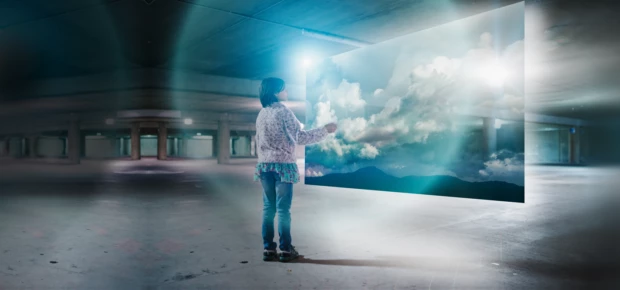
Member Article
Training, treatment and realism in virtual reality
Feeling immersed in virtual reality is a central goal of much of the work that goes into it.
Improving headsets, haptic feedback and other elements to create a true sense of presence is no easy task. One researcher addressing the challenge is Anderson Maciel, IEEE member and Associate Professor at the Federal University of Rio Grande do Sul (UFRGS) in Brazil.
“We evaluate the system’s capability to generate in human subjects the sense of presence in the virtual world. Presence is the human disposition for suspension of disbelief, to forget that the virtual is virtual,” Maciel says.
And the bar for that is quite high: “Any misalignment can cause cybersickness; discomfort, with symptoms like dizziness, nausea, eye strain, etc.”
Achieving a sense of presence starts with the challenge of how to measure it. Since it’s a subjective feeling, asking the participant questions makes it hard to develop consistent data sets. To Maciel, it’s important to try more objective measures, like “heart rate, stress level, eye tracking, pupil dilation, brain electrical patterns and other parameters” to help scientists understand when and why users lose their sense of presence in VR.
These efforts are part of a larger goal of helping people. For Maciel, “training simulations, health applications, behavior studies… they could all change how people live for the better.”
By establishing measures of presence, it becomes easier to work on and test specific VR technologies. Realistic computer graphics are central to virtual realism; accurately capturing body language and emotional cues is important for building virtual collaborative workspaces.
Improving these elements leads to important outcomes, like practicing customised surgeries in VR, and even allowing for surgery through telepresence systems. Here, “a human surgeon in a reference hospital of a great metropolis will guide a robot surgeon to operate on a patient located far from urban areas, in the battlefield or in space,” says Maciel.
When it comes to physical performance, athletes are starting to use VR to prepare for events. For example, American ski racers work on their rhythm using VR, and some use it in their rehabilitation from injury.
Similar technology also has potential for people suffering from anxiety and post-traumatic stress disorder. If someone gets stressed by public speaking, for example, The Institute found a VR app that can simulate speaking to a crowded room, complete with crowd noise. They also came across VR being used to treat soldiers with PTSD as they get adjusted to civilian life.
This article just begins to describe of how much promise these technologies have for the lives of people around the world. Keep an eye on our VR/MR section over the next two months for a number of videos, stories and more featuring IEEE experts like Anderson Maciel.
This was posted in Bdaily's Members' News section by IEEE .




 test article 123456789
test article 123456789
 hmcmh89cg45mh98-cg45hm89-
hmcmh89cg45mh98-cg45hm89-
 test456456456456456456
test456456456456456456
 test123123123123123123
test123123123123123123
 test xxxdiosphfjpodskhfiuodsh
test xxxdiosphfjpodskhfiuodsh
 Savour the flavour: North Tyneside Restaurant Week returns for 2024
Savour the flavour: North Tyneside Restaurant Week returns for 2024
 Six steps to finding the right buyer for your business
Six steps to finding the right buyer for your business
 Stephen signs off on a special night
Stephen signs off on a special night
 Life’s a Peachaus: Gillian Ridley Whittle
Life’s a Peachaus: Gillian Ridley Whittle
 Making a splash: Phil Groom
Making a splash: Phil Groom
 Making workplace wellbeing a priority
Making workplace wellbeing a priority
 A record of delivery, a promise of more: Ben Houchen
A record of delivery, a promise of more: Ben Houchen